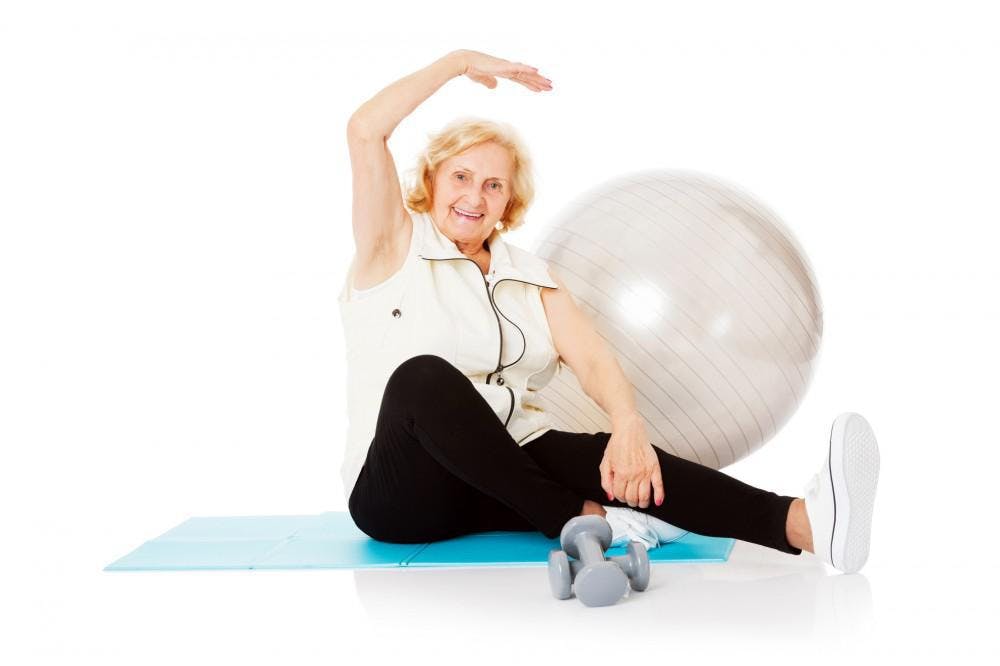Exercise to Manage Knee Osteoarthritis

Although it sounds counterproductive, one of the best ways to treat osteoarthritis of the knee is with a little bit of light exercise. Many people who suffer from OA of the knee tend to think that exercise might make their symptoms of pain and stiffness worse, but on the contrary, it can actually help improve knee strength, mobility, and function.
Of course, you should always talk to your doctor or our team at Spruce Health Group to figure out what exercises are right for you before beginning.
Exercise to Manage Knee Osteoarthritis
Exercise, really? You betcha. Movement is lotion to your joints.
By Joseph J. Ruane, DO
When you have knee osteoarthritis (OA), you might think that exercise will make your knee hurt more. But exercise can help ease the symptoms of knee OA.
But before beginning an exercise plan, talk to your doctor or physical therapist. He or she will also be able to recommend the type of exercise you should be doing for your knee OA.
You can also work with a personal trainer who has experience working with people with knee osteoarthritis. The personal trainer can also show you specific exercises and stretches to help you manage your knee OA symptoms.
The Benefits of Exercising with Knee Osteoarthritis
There are numerous benefits of exercising with knee OA, but some of the most important ones include:
- helps build up the muscles surrounding the knee joint
- improves knee strength, mobility, and function
- keeps you at a healthy weight or helps you lose weight (extra weight can put extra pressure on your knee joints)
- may decrease the amount of other treatments you need for knee osteoarthritis, such as medications
The 3 Main Types of Exercise for Knee Osteoarthritis
There are 3 basic types of exercise you need to know about.
- Flexibility exercises are an excellent way to ease yourself into an exercise program for knee OA—especially if you haven’t been active in years. Knee joints can become very stiff if you don’t use them regularly.Pilates, yoga, and other types of stretching are all flexibility exercises you can do. Build up to doing at least 15 minutes of flexibility exercises every day.1 When you’re able to do 15 continuous minutes of flexibility exercises, you can gradually begin to add strengthening and aerobic exercises to your routine.
- Strengthening exercises help build muscles, which act as shock absorbers for your knee joints, reducing some of the impact to your joints. You need strong muscles (especially in your legs) to do just about anything—walk, climb stairs, bend, and lift.Little by little, work strengthening exercises into your workout routine until you can do about 15 minutes of strengthening exercises a day. Don’t use any weights initially: You can use your own body weight as resistance. However, as you become more familiar with the moves, you can add some light weights.
- Aerobic exercises such as walking and water aerobics add another dimension to your workouts. For example, working out in the water is so much easier on your joints than running
Aerobic exercise is also essential when you have knee OA because it gets your heart pumping and helps keep you at a healthy weight. The Arthritis Foundation recommends:
- 150 minutes of moderate-intensity aerobic exercise per week
- OR
- 75 minutes of vigorous-intensity aerobic exercise per week
- OR
- an equivalent combination of moderate and vigorous exercise.
Exercise Tips for Knee Osteoarthritis
Here are our top tips for exercising with knee OA.
- Take it slow and steady. When you’re exercising, there’s no need to rush. The key is to take it nice and easy. Focus on being gentle with your body: Go at your own pace.
- Be consistent. Stiffness can set in after just a few days of not exercising, so it’s important to keep up with your workout plan. Even if you can only do 15 minutes of stretching, that will still help to keep your knee joints flexible.
- Respect your body. Some soreness is expected after the first couple of days of starting an exercise program. But if your pain gets worse, stop exercising and call your doctor immediately. Don’t feel like you have to exercise through the pain: Listen to what your body is telling you.
Keeping these tips in mind, exercising with knee osteoarthritis can be easy and a good way to manage your knee osteoarthritis symptoms.
Categories: General, Total Joint Care
